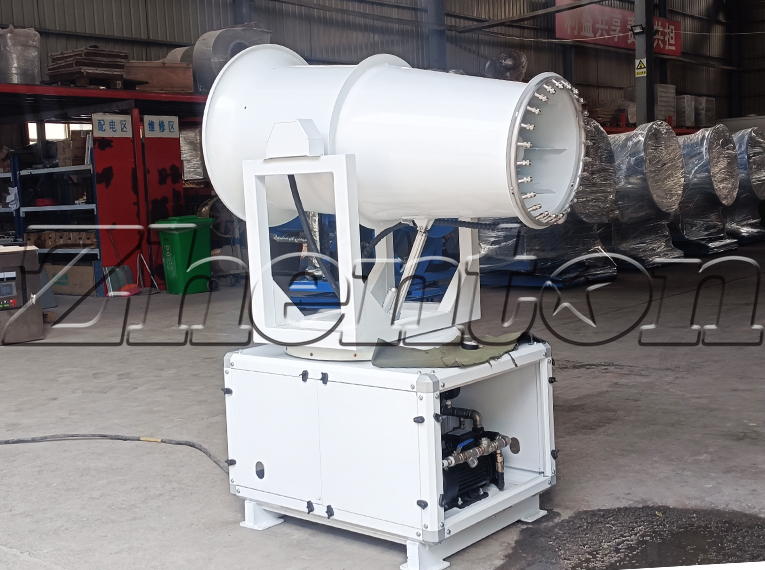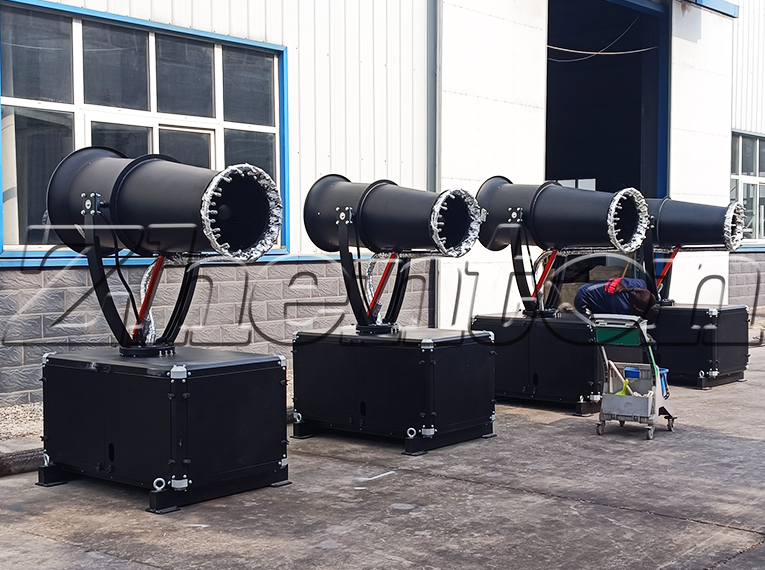Driving through city streets, vehicle traffic kicks up persistent dust clouds, while construction sites release gray veils—these mundane scenes silently degrade urban air quality. Authoritative data shows road dust contributes up to 30% of PM2.5/PM10 in some cities, with traditional sweepers and sprinklers failing to meet modern environmental demands. Enter fog cannon machines, a game-changing solution revolutionizing road maintenance with disruptive technology.
Breaking Traditional Barriers: Fog Cannons Overturn Dust Control Paradigms
Conventional road maintenance relied on mechanical sweepers and manual sprinkling. Sweepers cleared visible debris but couldn’t tackle fine dust from vehicle compaction; sprinkling lacked uniform coverage and wasted water, even risking slippery roads. As environmental policies tighten and public air quality awareness rises, road dust control demands smarter, more efficient approaches.
Technological Edge: Decoding Fog Cannons"Dust-Suppressing "Magic"
Micro-Atomization: Trapping Dust Particles
Fog cannon machines use high-pressure systems to atomize water into 20–80-micron droplets—"micro sponges" that actively capture dust via Brownian motion. On a municipal road test, PM10 levels dropped from 380μg/m³ to 70μg/m³ post-activation, achieving over 80% suppression. Their uniform mist penetrates road crevices and green belts for free (blind spot-free) control.
Intelligent Cruise: Building Dynamic Dust Networks
New-gen fog cannons integrate 5G IoT for smart cruising. Linked to GPS and road dust monitors, they auto-plan optimal routes, targeting high-dust zones like construction sites or dirt truck paths. A ring road adoption reduced manual scheduling by 65% and cut response time from 15 to 3 minutes—truly "treating dust where it arises."
Green Efficiency: Redefining Maintenance Economics
Fog cannons prioritize sustainability with variable-frequency technology, adjusting spray pressure based on real-time dust levels—saving 70% more water than traditional sprinklers. Rainwater recycling interfaces further purify collected water for reuse. In a northern water-scarce city, one unit saved 20,000 tons of municipal water annually, slashing maintenance costs.

Multidimensional Value: From Air Purification to Urban Upgrade
Fog cannons offer more than dust control. In summer, they act as "urban coolers," lowering road temps by 5–8℃; during smog, dust suppressant-equipped models adsorb pollutants; and in dry seasons, they humidify to reduce airborne dust. A major transport hub saw a 22% drop in respiratory clinic visits and 18% fewer road accidents post-adoption—delivering dual environmental and social benefits.

As technology and environmentalism converge, fog cannon machines silently reshape urban ecological landscapes. More than just maintenance tools, they embody a city’s finesse in governance. With ongoing technological iteration, these machines will continue safeguarding urban "blue skies," ensuring every journey is breathed with fresh confidence.











